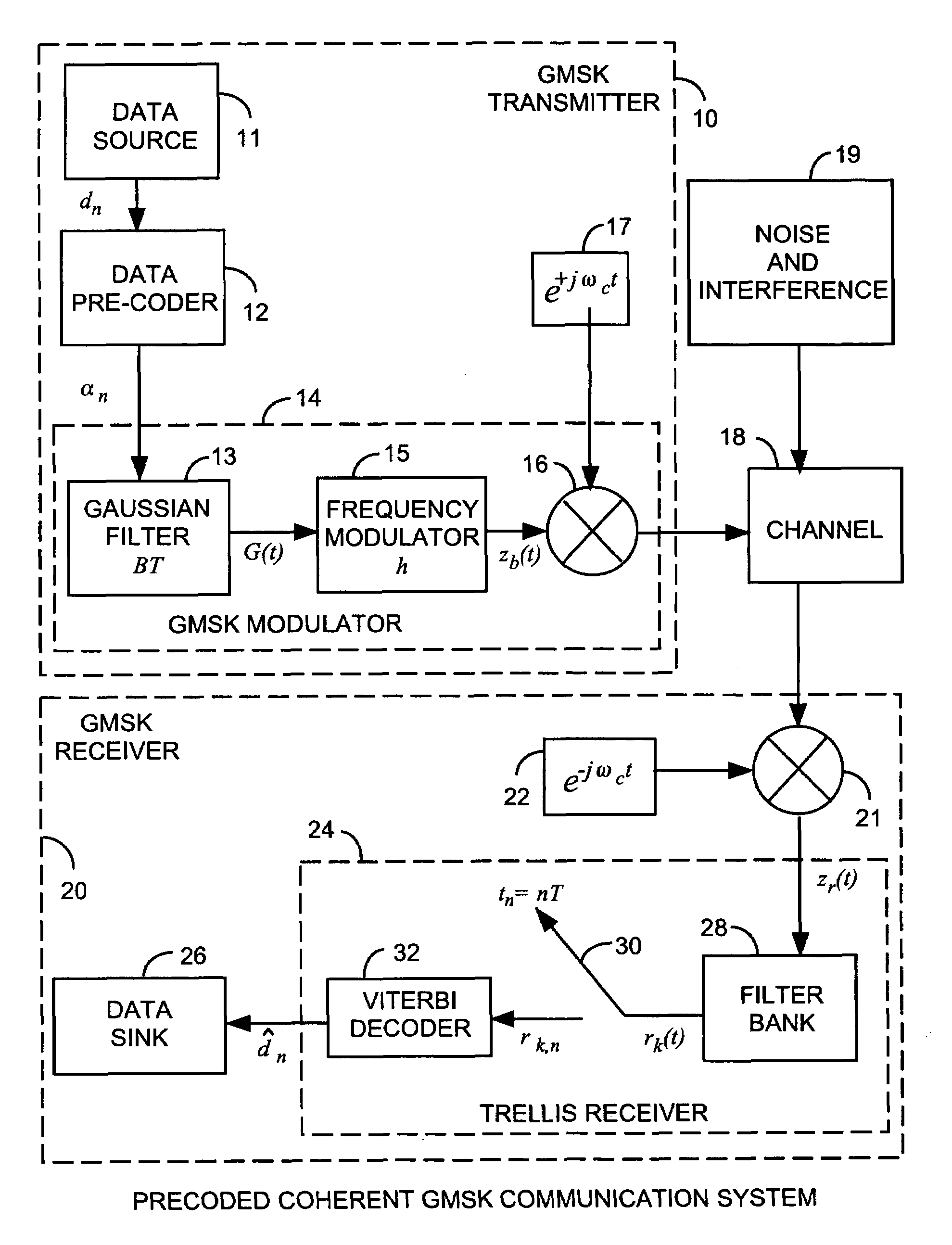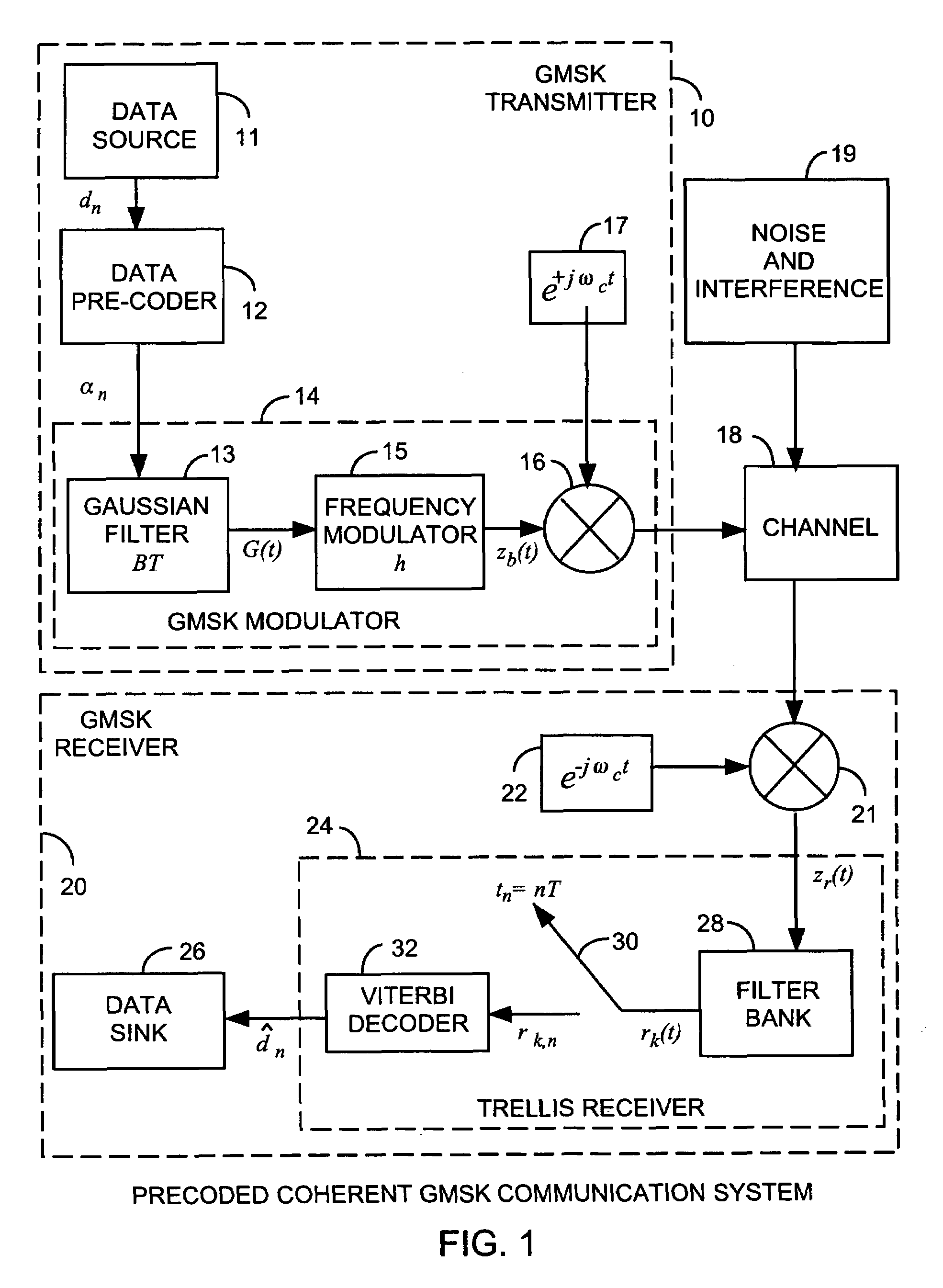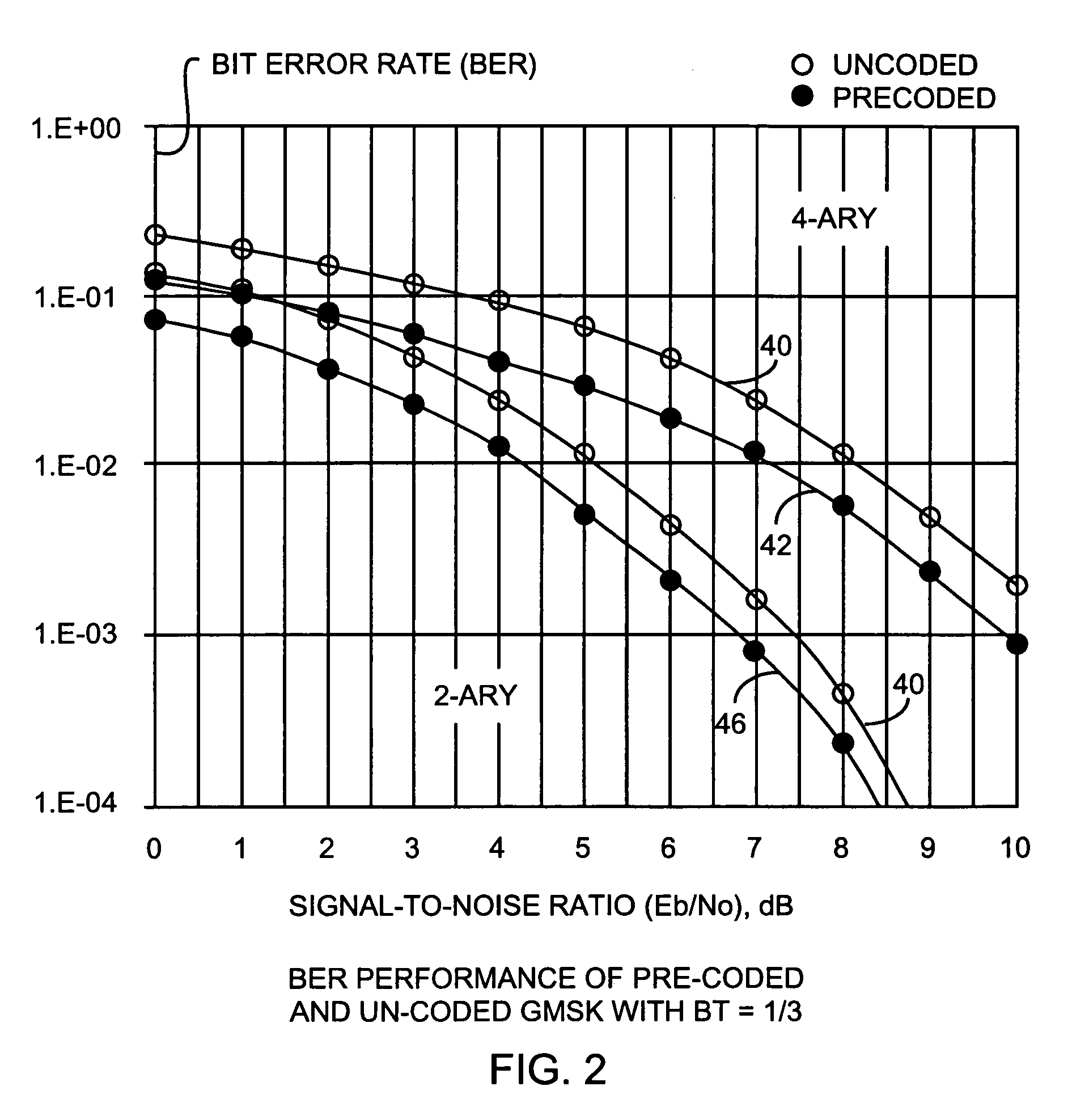Gaussian minimum shift keying (GMSK) precoding communication method
a communication method and gaussian minimum technology, applied in modulation, pulse technique, digital transmission, etc., can solve the problems of differential bit error rate (ber) degradation and poor bit error rate performance of differential decoders, and achieve the effect of reducing ber, reducing ber, and improving the resulting ber performance of continuous phase modulated (cpm) receivers
- Summary
- Abstract
- Description
- Claims
- Application Information
AI Technical Summary
Benefits of technology
Problems solved by technology
Method used
Image
Examples
Embodiment Construction
[0015]An embodiment of the invention is described with reference to the figures using reference designations as shown in the figures. Referring to FIG. 1, a baseband representation of an M-ary Gaussian minimum shift keying (GMSK) communication system is simplistically shown for convenience to have ideal symbol timing and carrier phase synchronization. The GMSK transmitter 10 comprises a data source 11, a data precoder 12, and a GMSK modulator 14. The data source 11 continuously generates M-ary NRZ data symbols dn chosen from an M-ary alphabet set {±1, ±3, . . . ±(M−1)}. These source symbols dn are then precoded by the data precoder 12 into a precoded symbol sequence αn that is in turn modulated by the GMSK modulator 14. The GMSK modulator 14 includes a Gaussian filter 13, a frequency modulator 15, and a frequency converter 16. The Gaussian filter 13 is defined by a bandwidth time product (BT) that may be, for example, ⅓, where B is the one sided 3 dB bandwidth in hertz of the Gaussi...
PUM
 Login to View More
Login to View More Abstract
Description
Claims
Application Information
 Login to View More
Login to View More - R&D
- Intellectual Property
- Life Sciences
- Materials
- Tech Scout
- Unparalleled Data Quality
- Higher Quality Content
- 60% Fewer Hallucinations
Browse by: Latest US Patents, China's latest patents, Technical Efficacy Thesaurus, Application Domain, Technology Topic, Popular Technical Reports.
© 2025 PatSnap. All rights reserved.Legal|Privacy policy|Modern Slavery Act Transparency Statement|Sitemap|About US| Contact US: help@patsnap.com



